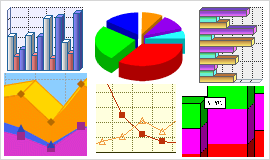Deductive Reasoning in Mathematics
May 22, 2015
Deductive Reasoning – Mind v Math
Deductive reasoning - the process of determining a logical conclusion from a specific set of data. Such a simple concept. So simple, in fact, that for generations deductive reasoning was believed to be an inherent trait of the human mind. Children are naturally curious. They learn by exploring their world. Both success and failure teach them that certain actions have certain consequences. Early deductive reasoning re-enforces the obvious. “Mother provides food. I am hungry. If I go to mother, I will get food.”
Unfortunately, as we age, our natural inquisitiveness falls prey to insecurity. The opinion of others begins to matter and mental inquisitiveness is edited. It is this loss of spontaneous curiosity that makes the teaching of deductive reasoning necessary. The enjoyment of math has its foundation in the curiosity to question facts, and the reasoning to formulate logical conclusions. Math is fun because math makes sense.
How To Get From Here To There Using Deductive Reasoning
First documented by Aristotle in the 4th century B.C., deductive reasoning is basically top-down reasoning. Using information from a set of related data, deductive reasoning formulates a logically certain conclusion. For example: “All the female members our family have brown eyes. Mary is a female member of our family. Therefore, Mary has brown eyes.” In this example, the facts regarding the family history of brown eyes lead to the obvious conclusion that Mary’s eyes are brown.
As we advance further into more complicated deductive reasoning, the “facts to conclusion” path remains the same. There are three basic laws of logic that govern all deductive reasoning. The first is the Law of Detachment in which, like the example of brown eyes stated above, a conditional statement is made, a hypothesis is stated, and a logical conclusion is deduced from the information contained in both. The second is the Law of Syllogism in which two conditional statements are used. The conclusion is formed by combining the hypotheses of one conditional statement with the conclusion of the other. (if A = B, and B = C, then A = C). The third is the Law of Contrapositive in which the hypothesis is false if the conclusion of the conditional statement is false. (In winter, there is snow. There is no snow now. Therefore, it is not winter.)
Finally, deductive reasoning is evaluated by the Validity and Soundness of its arguments. A deductive argument is valid if it is impossible for the premises to be true if the conclusion is false. (All people who work ride the bus. Bob works. Therefore, Bob rides the bus.) This argument is not valid because, though Bob may ride the bus, not all people who work do. A deductive argument is sound if it is valid and the premises are true.
Graphing The Results Of Deductive Reasoning
Deductive reasoning is used extensively in the areas of statistics and probability. In statistics, the conclusion is determined by compiling a variation of data points in a given context. These data points can then be graphed to give visual presentation to numerical data. Graphs can be created in a number of different formats. The following are just a few of the options:

Whichever format you choose, using a good graphing calculator makes compiling the data to create the graph much easier. SellYourCalculators.com is the one stop location for all your graphing calculator needs. We sell reasonably priced new and used calculators. We also pay competitive prices to buy back calculators that have served their purpose and are no longer needed.
Contact us today for more information on our buy and sell options.
20508 Views | 0 Comments | Category - news





